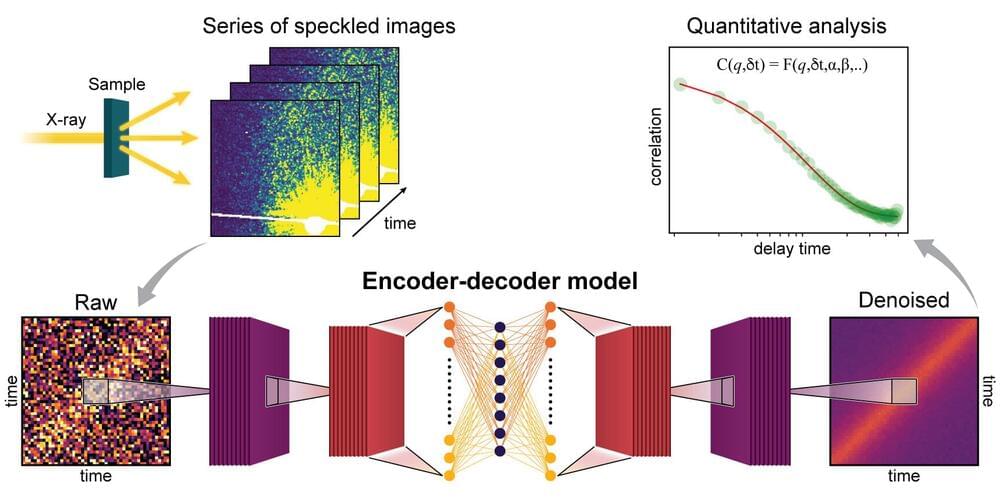Scientists from the National Synchrotron Light Source II (NSLS-II) and Computational Science Initiative (CSI) at the U.S. Department of Energy’s (DOE) Brookhaven National Laboratory have helped to solve a common problem in synchrotron X-ray experiments: reducing the noise, or meaningless information, present in data. Their work aims to improve the efficiency and accuracy of X-ray studies at NSLS-II, with the goal of enhancing scientists’ overall research experience at the facility.
NSLS-II, a DOE Office of Science user facility, produces X-ray beams for the study of a huge variety of samples, from potential new battery materials to plants that can remediate contaminated soil. Researchers from across the nation and around the globe come to NSLS-II to investigate their samples using X-rays, collecting huge amounts of data in the process. One of the many X-ray techniques available at NSLS-II to visiting researchers is X-ray photon correlation spectroscopy (XPCS). XPCS is typically used to study material behaviors that are time-dependent and take place at the nanoscale and below, such as the dynamics between and within structural features, like tiny grains. XPCS has been used, for example, to study magnetism in advanced computing materials and structural changes in polymers (plastics).
While XPCS is a powerful technique for gathering information, the quality of the data collected and range of materials that can be studied is limited by the “flux” of the XPCS X-ray beam. Flux is a measure of the number of X-rays passing through a given area at a point in time, and high flux can lead to too much “noise” in the data, masking the signal the scientists are seeking. Efforts to reduce this noise have been successful for certain experimental setups. But for some types of XPCS experiments, achieving a more reasonable signal-to-noise ratio is a big challenge.
